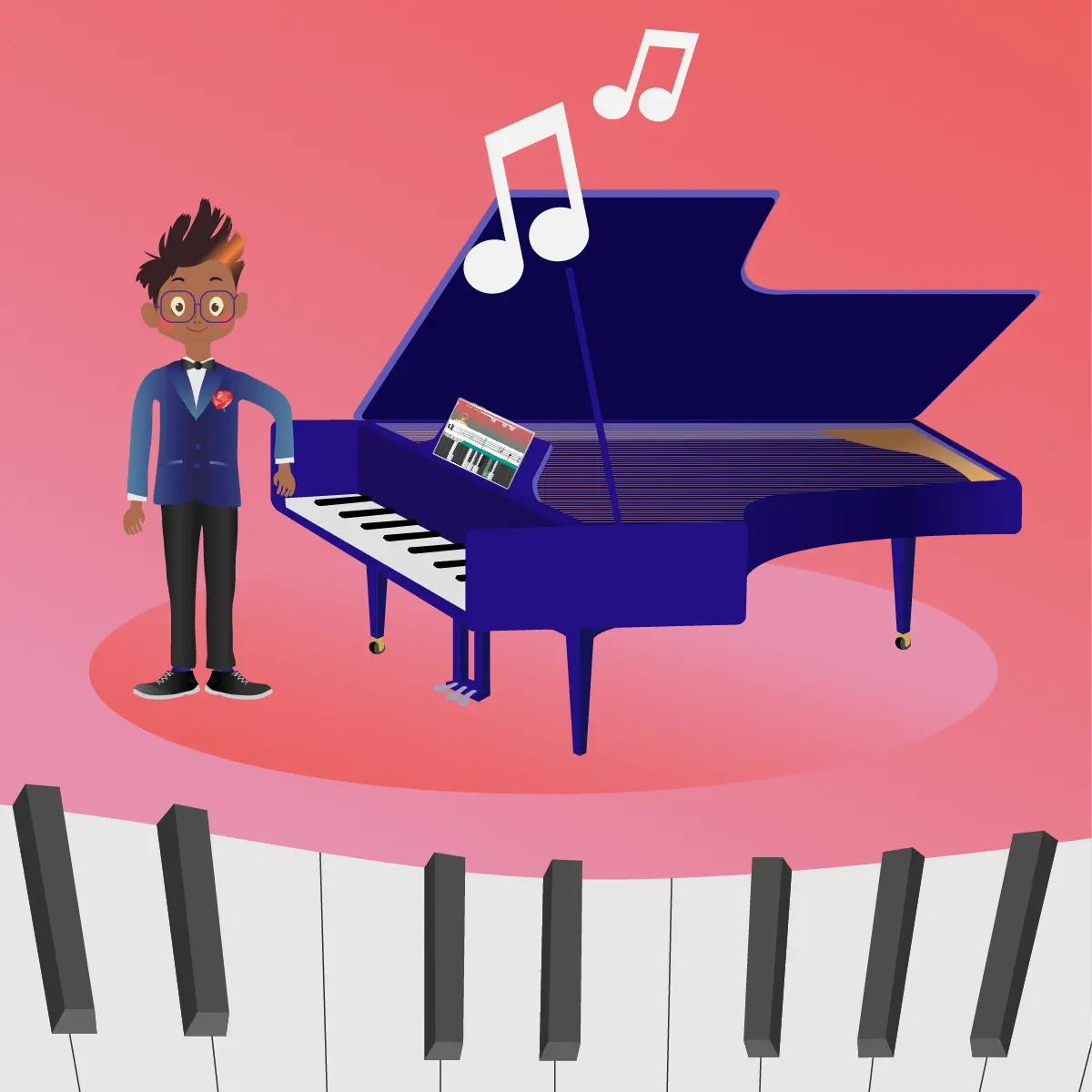By Arctic Meta,
It’s pretty safe to say that in the modern world, most kids have seen and experienced things that their parents would never have even imagined when they were the same age. The methods used to educate children may have similarities to the past, but they have altogether changed as technology has evolved and made way for more innovation.
Today the average student day might include sitting at a desk listening to their teacher, but it is also very likely to include things like practical exercises, game-based learning and digital intervention. A student might begin their morning learning about some of the greatest artists in history and finish with a digital tour of the Louvre Museum in Paris.
One could argue that thanks to technology, education has become more engaging than ever. Classrooms have taken on a new life. Interactive learning has become the new standard for instructing the generations of the future, but what exactly is interactive learning? How is it better for kids? What are the main benefits interactive learning offers? Read on to find out more.
What is Interactive Learning?

The term ‘interactive learning’ is becoming increasingly common in a modern educational context, but what exactly does it mean?
Interactive learning is about giving students an all-rounded experience that aims to not just instruct them on a theoretical level but also give them real-world examples and experiences to back up the knowledge they are absorbing.
The main idea behind this approach to teaching is about making sure students completely comprehend information rather than just memorise and regurgitate it.
The Top 6 Benefits of Interactive Learning

There are many benefits to interactive learning, and they spread across a large array of skills and educational milestones. Below are the top 6 benefits of interactive learning for students.
1. Engaging Content

Kids are naturally curious; they want to learn as much as they can about the world around them because they are trying to make sense of it all. This natural curiosity primes them to be great students, but even the most curious of scholars can get bored or disengage from learning material if it’s too repetitive or monotonous.
When kids participate in interactive learning, they engage multiple senses at once. They aren’t just reading or listening; they are also watching, participating, experiencing and engaging. This level of engagement uses multiple parts of their growing brains and makes it easier for them to retain information.
2. Provides Flexible Learning

Thanks to technological innovation, it’s now possible to make a child’s learning experience more suited to their specific needs. Interactive learning also means that education is more accessible for students all over the world. Lessons don’t have to be limited to one geographic location like a classroom; they can take place anywhere with an internet connection.
The flexibility interactive learning offers also extends to the relationship between parents and teachers. Both can now track and share a student’s progress to make sure that they are getting exactly what they need at the right time in their learning journey.
3. Saving Time and Cost

One of the biggest immediate changes parents see when they take advantage of digital learning is that it saves a great deal of time. With digital learning, students don’t need to travel to different locations to receive tutoring; they can learn from anywhere that has an internet connection. This means that even if the family needs to go on an unexpected trip, a child won’t miss out on their educational needs.
A study actually found that utilising e-learning can quicken the educational process from between 25% and 60%. Basically, students master skills faster because they are learning smarter.
Digital learning also saves a lot of money because it cuts out the need for physical space and resources, which are quite commonly some of the most expensive elements when it comes to education. The impact of making education more cost-effective means that more and more kids from underrepresented backgrounds will have access to quality tools to give them the best possible educational outcomes for the future.
4. Teachers Making Use of Interactive Learning Tools

Within the framework of interactive learning, teachers are often able to track a student’s progress at all times. This means it’s much easier for educators to know exactly where a student is at in their learning journey and what they need to succeed.
Interactive learning also enables educators to utilise different platforms, media and tools to keep classes engaging, entertaining and interactive. When students are immersed in an engaging stream of education, they are far more likely to continue learning in their own time.
5. Adaptable Lesson Plans

In a post covid world, most people have learned that adaptation is the key to survival. It shouldn’t really be a surprise, after all, that adaptation is the single most important factor when it comes to the survival of any species.
This same attitude can be applied in an educational context. A great lesson is one where there is room to change and adapt to the needs of a class or individual student. Within an interactive learning system, a teacher is able to change things up almost in an instant, depending on the needs of a class. Resources and media are available at lightning speed, which means that any form of change won’t result in disruption.
With interactive learning, the capabilities and reach of an educator are greatly expanded, which will, in turn, have dramatically positive effects on learning.
6. Fun & Enjoyment For Children

When it comes to learning, there are, of course, many factors that come into play. There is a curriculum to follow, there are educational milestones to hit at specific times, there are benchmarks and assessments. However, many forget the value fun has in helping kids to remain engaged and retain information.
Interactive learning helps to create a sense of fun and enjoyment for children. It increases the opportunities they have to laugh, share, collaborate and stay motivated because the element of fun taps into some of their core needs as humans.
How is Interactive Learning Implemented?

There isn’t a ‘one size fits all’ approach to implementing interactive learning. It can be done quickly or over time. There can be a complete switch over to complete interactive learning, or a school or educator can opt for more of a hybrid model, combining interactive tools with a more traditional learning structure.
Below are a few ways teachers can begin to inject some elements of interactive learning into their classrooms.
Freedom to Choose Learning Style

This is where students are given the power to choose what kind of learning style they prefer. Although interactive learning has incredible benefits and seems to be the way of the future, there are definitely still students who would prefer to stay closer to the traditional classroom, chalkboard model of learning. It can be beneficial to let students have some control over how they participate.
When students are given the freedom to choose their learning style, they are more empowered and will very likely play a more active role in their education. A way of implementing this can be as simple as allowing students to choose their method of presentation. Perhaps they would prefer to write an essay, maybe they would rather present using Powerpoint; they might even want to produce their own short documentary.
Student-to-Student Collaboration

Peer to peer learning should never be underestimated. When students collaborate, it doesn’t matter what the subject matter is; they will always learn more efficiently. Implementing this within interactive learning can be as simple as allowing students time to chat with each other online before answering questions. It can help them to appreciate the value of shared knowledge and peer education. There are many platforms already in existence that can help facilitate something like this.
Lesson Flexibility

In the past, when it came to education, there was a teacher, a curriculum and a lesson plan. These were the facts, and they were incredibly rigid. There wasn’t really the ability to veer off from the prescribed content, and if a student couldn’t grasp what was covered, they might just get left behind because nothing stopped the lesson plan.
One of the biggest innovations that has come from interactive learning is the ability to make learning a more collaborative, organic and hands-on process. It keeps the lines of communication open and allows teachers to get an instant overview of how well students are doing with the subject material. They no longer have to wait until the end of a unit of study to determine if a student gets it. They can assess it at every step of the process and make adjustments to avoid failure.
Why is Interactive Learning Important For Children?

If kids have learned without interactive tools for so long, why is it suddenly so important now? As stated above, there are some very specific benefits that come from implementing interactive learning into the classroom. Below are some of the reasons why this implementation is so beneficial to kids who are learning in a modern world.
Student Engagement
Many adults with school-aged kids can probably remember that the most exciting class, back in the day, was one that involved computers or some kind of technology. The reason this was so exciting was that it took students out of the monotony they often experience in a traditional learning environment. It was also exciting because the technology being used was something that would eventually impact the world in massive ways.
Even today, using some form of technology, be it a computer, tablet or some other device, is way more interesting to kids than staring at a board and copying information into a notebook. The interactive nature of tech in the classroom always elevates the level of engagement that students show towards lessons. It excites them because it taps into the intuitive behaviours they have already developed from a young age.
Supports Life Skills

School is designed to prepare kids for life. A huge part of that is developing social and emotional skills. These are five core skills that enable adults to function within society. The five core skills are responsible decision-making, emotion management, self-awareness, healthy relationship building and social awareness.
It’s been recognised that when kids are more actively engaged in activities as they learn, their core skills are given a dramatic boost. Interactive learning helps make the educational process more collaborative and gives kids more chances to engage with each other in meaningful ways. Over time, this helps them to be better equipped for the many challenges they will face later in life.
Provides Learning Variety

Variety, as they say, is the spice of life; but it’s also a valuable tool for keeping students engaged. Interactive learning provides ample opportunity to increase the amount of variety within lessons. Teachers are able to deliver lessons utilising different methods.
The variety provided through interactive learning also facilitates more ‘real world’ examples of subject matter and helps to strengthen students’ core skills at a much faster rate.
What are the Main Disadvantages of Interactive Learning?

There isn’t a single method of delivering a quality education that has no disadvantages. Below are some of the most common things those who have delved into digital learning have noticed that might throw a few curve balls at lessons.
Technical Issues

Technical issues and glitches are a normal part of using software and technology. Even the best programs and equipment will have moments where they just don’t seem to work. There can be moments where a simple issue creates a massive problem for a teacher delivering a lesson.
A few tips are to make sure that software is always up to date, test out new things before entering the class, and make sure there is a backup plan just in case something goes wrong. It’s much better to have a backup plan that is never used than to need one and not have one.
Time Preparation by Teachers

Often taking on and implementing any form of interactive learning can be time-consuming at the start. Lesson plans don’t just appear; they need to be created, and combining this with the inevitable need to learn how digital software works can be overwhelming.
In many cases, the best thing to do when looking at the task ahead is to remember that it isn’t going to be as time-consuming forever. Often when digital learning resources are set up, they will, eventually, save a lot of time. Think of the time spent now as an investment for the future.
Teaching through Traditional Methods & Interactive Learning Methods

For many educators and students, a complete switch to digital interactive learning isn’t realistic, and they instead opt for a combination of interactive and traditional learning models. This hybrid approach takes many of the conveniences and engaging abilities provided by technology and uses them to combat some of the issues faced within the traditional learning model.
For example, the amount of students in a single classroom is often less than ideal. Injecting some digital elements into the day-to-day classroom can help to make sure that all students have the same opportunities and are engaged with their studies as much as they possibly can be.
How Mussila Supports Interactive Learning

Mussila is an award-winning music education app that was born out of the digital education revolution. The Mussila Music School takes formal music education and puts it into an interactive digital package that’s attractive and fun for kids.
Mussila takes students through all the elements of music, including theory, listening, playing instruments, composition and, of course, play, and the best part is that this incredible app is designed to be used without the need for parental supervision.
This gamification of education has been so successful that Mussila is also about to launch a similar app to help kids learn to read called ‘WordPlay.’
To find out more about Mussila Music School and WordPlay, follow Mussila on social media and check out the Mussila website.
Conclusion

The way experts think about education has completely changed in the last century, and this has largely been because of innovations in technology. Thanks to the digital revolution, it’s never been easier to add some interactive elements to the average school day. It’s never been easier to enhance subjects or activities to give some real-world examples, exercise skills and most importantly, have some fun.














